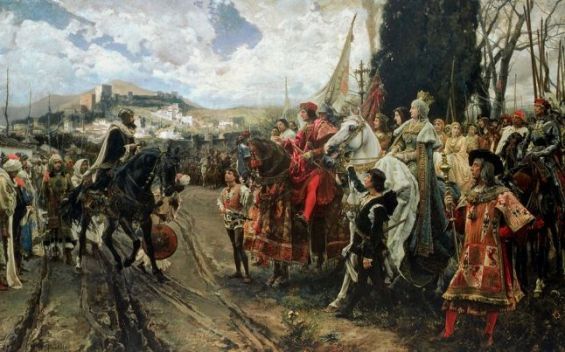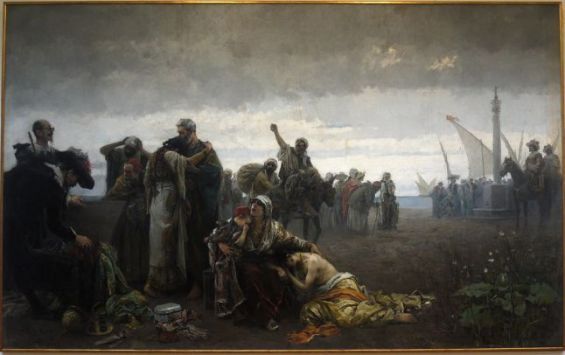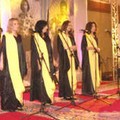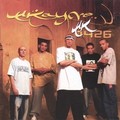In 1690, Sultan Moulay Ismail, and after regaining Tangier and Larache, sent his minister Mohamed Ben Abdelouahab Al Ghassani Al Andaloussi Al Fassi to Spain to settle two major issues. The diplomat had to exchange Muslim captives for a library that used to belong to the Saadi dynasty and which was seized by Spanish pirates in 1612.
His diplomatic mission was described in his book «Rihlat Al-Wazir fi Iftikak al Asir» (The Journey of the Minister to Free Captives).
Moulay Zidane's lost manuscripts
In 1612, Moulay Zidane, the son of Saadi sultan Ahmed Al Mansour, was forced to settle down in Agadir. «He had his library transported via the sea to his new residence», wrote Mohamed Sijelmassi and André Miguel in «Manuscrits de la bibliothèque royale au Maroc» (Act, 1987). But between Essaouira and Agadir, the ship was seized by Spanish pirates who took all the books and gave them to the Royal Library of Escorial.

A few years later, Moulay Ismail took advantage of his two victories in Tangier and Larache to ask King Carlos II to hand the Kingdom back the valuable manuscripts and to release all Muslim captives as well. In September 1690, the Alaouite sultan chose Mohamed Ben Abdelouahab A Ghassani Al Andalousi Al Fassi to head a diplomatic delegation sent to Spain to negotiate the release of the Moroccan captives.
«He selected Minister Mohamed Ben Abdelouahab Al Ghassani Al Andaloussi Al Fassi, who is also a writer and a poet and who was also an intellectual and a politician. He spent several months there and returned on the same year to Morocco», said the magazine «Daaouat Al Haq», published by the Ministry of Habous and Islamic Affairs.
The letter of Moulay Ismail
Moulay Ismail handed over his ambassador a letter that he had to deliver to King Carlos II of Spain. According to Lebanese historian Nabil Matar, «Ismail sent a letter with Al Ghassani dated september 20, 1690 and adressed to the 'Great one of Ruum, and prince of the Spanish regions and the lands of India', in which he informed Don Carlos about Al Ghassani and his assistant, Abdesslam Jassous».
«He was sending Al Ghassani with this letter he wrote, in response to the letter the king had sent him in regard to one hundred Christian captives (including six priests) who had been seized at the liberation of Larache by the 'soldiers of Islam'», Matar wrote in his book «In the Lands of the Christians: Arabic Travel Writing in the 17th Century» (Routledge, 2013).
In his letter to Carlos II of Spain transmitted by Al Ghassani, Moulay Ismail recalls in particular a «triade on the treachery of the Spaniards in Granada, two centuries earlier».
Ismail wanted «Islamic books, select and authentic, that are stacked in the libraries of Sevilles, Cordoba, Granada and other cities and villages as our servant chooses, copies of Quran and others, should there not be books enough, Ismail continued, he wanted ten captives for each Christian, Muslim captives, in whatever condition they are, and from whatever country they are».
«Ismail wanted his ambassador to select the books, making sure that all copies of Quran were included. He also wanted the return of all captives, 'the woman and the boy, the adolescent and the aged from among our subjects as well as from among others'. Furthermore, he wanted Carlos to allow any free Muslim in Spain wishing to leave the country to do so».

The ambassador's voyage started near Ceuta. After «two days, the delegates reached Cadiz, and as they wandered about, they met some of their captured compatriots, men, women and children, happily witnessing to God and calling for victory for our master», wrote Jennifer Speake in her book «Literature of Travel and Exploration: G to P» (Taylor & Francis Publishing, 2003).
From Cadiz, Al Ghassani and his delegation went on «to Puerto de Santa Maria and then to Jerez de la Frontera. Then on to Lebrija, a small town. The travel went on to Utrera, then to Marchena, Cordoue, El Carpio, Andujar, and Linares before Madrid».
A not-so-successful mission
After having handed the King of Spain the letter of Moulay Ismail, the response of the Spanish authorities was not long. «The Spaniards have claimed that the fire of the Escorial of 1671 burned the Arabic manuscripts [although] in fact, a large part had been saved», say Mohamed Sijelmassi and André Miquel.
Disappointed with the bad news, the delegation then went to Toledo to negotiate the Sultan's second demand. Al Ghassani took advantage of his diplomatic voyage to write a travelogue that described Spain after the expulsion of Moors.
Entitled «Rihlat Al-Wazir fi Iftikak al-Asir» (The journey of the Minister to free the captives), this book evokes captives only in title, but remains a richly descriptive book about the journey.

«The author devotes almost all of his work to describe Spain, its history and the Court. Only a few lines are devoted to the purchase of Muslim captives», reports François Moureau in Captifs en Méditerranée (XVI-XVIIIe siècles) : Histoire, récit et légendes.
Nabil Matar, an Arabic and European travel literature specialist based in the US, expressed the same opinion about Al Ghassani's book. «Very strangely, Al Ghassani does not mention anything about the fate of captives he had been sent to ransom. But it is known that he succeeded in liberating an unknown number of them (Though whether it was the thousand asked for by Ismail is not clear). At the end of September 1691, the exchange of Magharibis with Spanish captives took place outside Ceuta and on October 18, 1691, the liberated captives were paraded in Meknes».
Al Ghassani eventually returns to the court of Moulay Ismail and dies in 1707 in Fez, leaving behind other literary works.





 chargement...
chargement...













